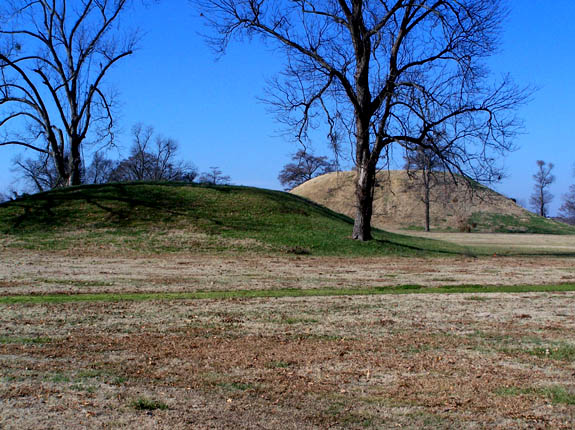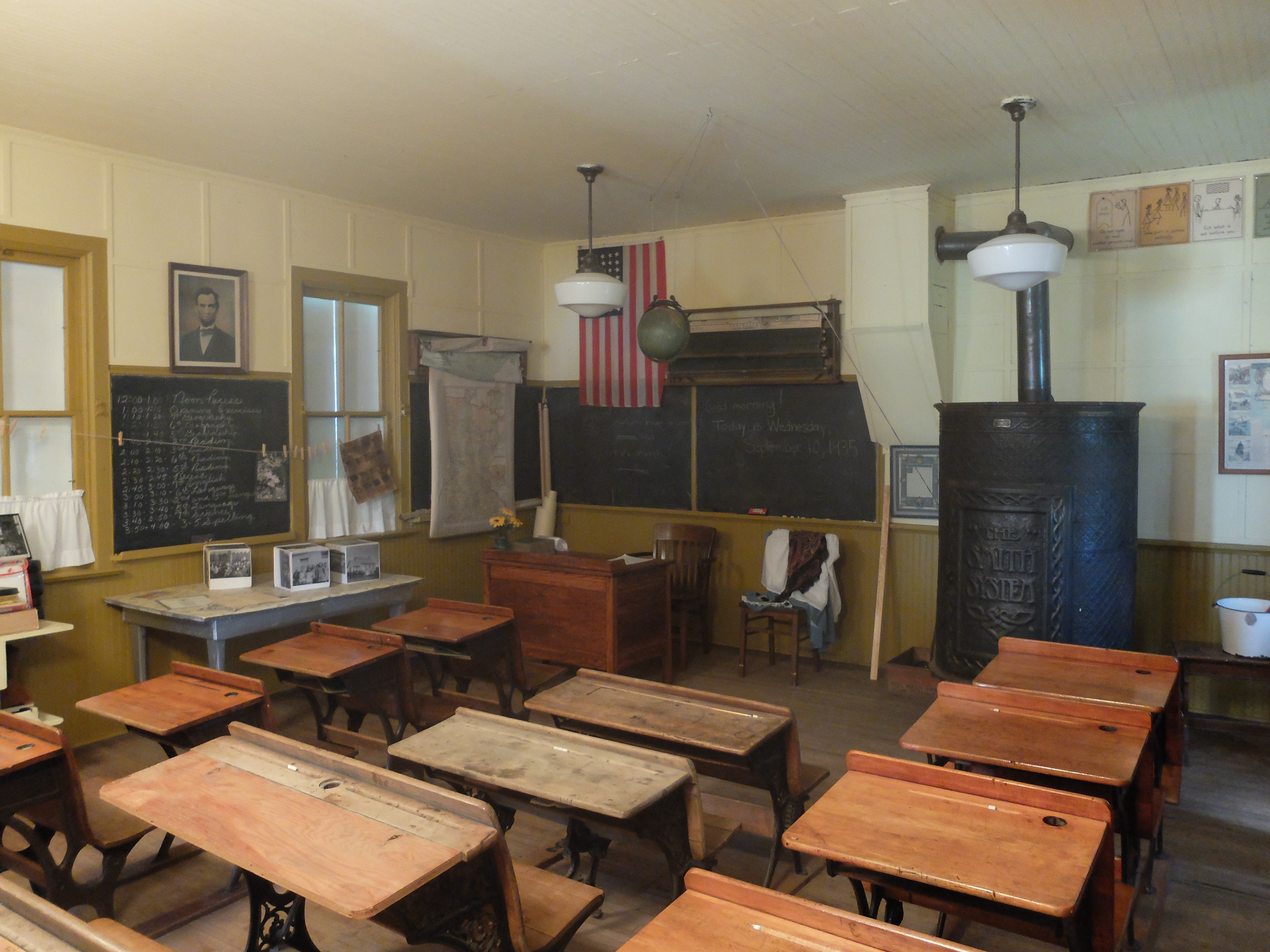|
Dog Branch School
The Dog Branch School is a historic one-room schoolhouse building in rural southeastern Carroll County, Arkansas. It is located about east of the hamlet of Osage, a short way south of United States Route 412 off County Road 927. It is a single story gable-roofed structure, built out of rough-hewn fieldstone. It has a very limited, vernacular amount of Romanesque Revival architecture, Romanesque Revival and Italianate architecture, Italianate features, including an arched entry opening and segmented-arch openings for the windows. The school was built in 1898, and is unusual mainly because most district schools built in the region at the time were built out of wood. Its builders, the Bailey Brothers, also built the Stamps Store in Osage. () The building was listed on the National Register of Historic Places in 1992. See also *National Register of Historic Places listings in Carroll County, Arkansas References School buildings on the National Register of Historic Places ... [...More Info...] [...Related Items...] OR: [Wikipedia] [Google] [Baidu] |
Osage, Arkansas
Osage is an unincorporated community in Carroll County, in the U.S. state of Arkansas. The community is on the south side of Osage Creek at the junction of Osage and Kenner Creeks. U.S. Route 412 U.S. Route 412 is an east–west United States highway, first commissioned in 1982. U.S. 412 overlaps expressway-grade Cimarron Turnpike from Tulsa west to Interstate 35 and the Cherokee Turnpike from east of Chouteau, Oklahoma, to west of th ... (US 412) passes on the north side of Osage Creek. History A variant name was "Fairview". As of 1889, Osage had four houses and a country store. References Unincorporated communities in Carroll County, Arkansas {{CarrollCountyAR-geo-stub ... [...More Info...] [...Related Items...] OR: [Wikipedia] [Google] [Baidu] |
Arkansas
Arkansas ( ) is a landlocked state in the South Central United States. It is bordered by Missouri to the north, Tennessee and Mississippi to the east, Louisiana to the south, and Texas and Oklahoma to the west. Its name is from the Osage language, a Dhegiha Siouan language, and referred to their relatives, the Quapaw people. The state's diverse geography ranges from the mountainous regions of the Ozark and Ouachita Mountains, which make up the U.S. Interior Highlands, to the densely forested land in the south known as the Arkansas Timberlands, to the eastern lowlands along the Mississippi River and the Arkansas Delta. Arkansas is the 29th largest by area and the 34th most populous state, with a population of just over 3 million at the 2020 census. The capital and most populous city is Little Rock, in the central part of the state, a hub for transportation, business, culture, and government. The northwestern corner of the state, including the Fayetteville� ... [...More Info...] [...Related Items...] OR: [Wikipedia] [Google] [Baidu] |
One-room Schoolhouse
One-room schools, or schoolhouses, were commonplace throughout rural portions of various countries, including Prussia, Norway, Sweden, the United States, Canada, Australia, New Zealand, the United Kingdom, Ireland, and Spain. In most rural and small town schools, all of the students met in a single room. There, a single teacher taught academic basics to several grade levels of elementary-age children. While in many areas one-room schools are no longer used, some remain in developing nations and rural or remote areas. In the United States, the concept of a "little red schoolhouse" is a stirring one, and historic one-room schoolhouses have widely been preserved and are celebrated as symbols of frontier values and of local and national development. When necessary, the schools were enlarged or replaced with two-room schools. More than 200 are listed on the U.S. National Register of Historic Places. In Norway, by contrast, one-room schools were viewed more as impositions upon con ... [...More Info...] [...Related Items...] OR: [Wikipedia] [Google] [Baidu] |
Carroll County, Arkansas
Carroll County is a county located in the U.S. state of Arkansas. As of the 2020 census, the population was 28,260. The county has two county seats, Berryville and Eureka Springs. Carroll County is Arkansas's 26th county, formed on November 1, 1833, and named after Charles Carroll, the last surviving signer of the United States Declaration of Independence. Geography According to the U.S. Census Bureau, the county has a total area of , of which is land and (1.4%) is water. Major highways * U.S. Highway 62 * U.S. Route 62 Spur * U.S. Highway 412 * Arkansas Highway 21 * Arkansas Highway 23 * Arkansas Highway 103 * Arkansas Highway 143 * Arkansas Highway 187 * Arkansas Highway 221 * Arkansas Highway 311 * Arkansas Highway 980 Adjacent counties * Stone County, Missouri (north) *Taney County, Missouri (northeast) * Boone County (east) *Newton County (southeast) * Madison County (south) * Benton County (west) * Barry County, Missouri (northwest) Demographics 202 ... [...More Info...] [...Related Items...] OR: [Wikipedia] [Google] [Baidu] |
United States Route 412
U.S. Route 412 is an east–west United States highway, first commissioned in 1982. U.S. 412 overlaps expressway-grade Cimarron Turnpike from Tulsa west to Interstate 35 and the Cherokee Turnpike from east of Chouteau, Oklahoma, to west of the Arkansas state line. It runs the entire length of the Oklahoma Panhandle and traverses the Missouri Bootheel. , the highway's eastern terminus is in Columbia, Tennessee at an intersection with Interstate 65, where it continues east as State Route 99. Its western terminus is in Springer, New Mexico at an intersection with Interstate 25. Route description U.S. 412, unlike other three digit highways, does not follow the standard numbering convention for U.S. Highways established by American Association of State Highway and Transportation Officials. The number 412 would have been used as a spur route of U.S. Route 12. Despite this, the two routes have never met with each other. US 412 overlaps with U.S. 43, U.S. 56, US 60, U.S. 62, U.S. ... [...More Info...] [...Related Items...] OR: [Wikipedia] [Google] [Baidu] |
Romanesque Revival Architecture
Romanesque Revival (or Neo-Romanesque) is a style of building employed beginning in the mid-19th century inspired by the 11th- and 12th-century Romanesque architecture. Unlike the historic Romanesque style, Romanesque Revival buildings tended to feature more simplified arches and windows than their historic counterparts. An early variety of Romanesque Revival style known as Rundbogenstil ("Round-arched style") was popular in German lands and in the German diaspora beginning in the 1830s. By far the most prominent and influential American architect working in a free "Romanesque" manner was Henry Hobson Richardson. In the United States, the style derived from examples set by him are termed Richardsonian Romanesque, of which not all are Romanesque Revival. Romanesque Revival is also sometimes referred to as the "Norman style" or " Lombard style", particularly in works published during the 19th century after variations of historic Romanesque that were developed by the Normans in ... [...More Info...] [...Related Items...] OR: [Wikipedia] [Google] [Baidu] |
Italianate Architecture
The Italianate style was a distinct 19th-century phase in the history of Classical architecture. Like Palladianism and Neoclassicism, the Italianate style drew its inspiration from the models and architectural vocabulary of 16th-century Italian Renaissance architecture, synthesising these with picturesque aesthetics. The style of architecture that was thus created, though also characterised as "Neo-Renaissance", was essentially of its own time. "The backward look transforms its object," Siegfried Giedion wrote of historicist architectural styles; "every spectator at every period—at every moment, indeed—inevitably transforms the past according to his own nature." The Italianate style was first developed in Britain in about 1802 by John Nash, with the construction of Cronkhill in Shropshire. This small country house is generally accepted to be the first Italianate villa in England, from which is derived the Italianate architecture of the late Regency and early Victorian e ... [...More Info...] [...Related Items...] OR: [Wikipedia] [Google] [Baidu] |
Stamps Store
The Stamps Store is a historic commercial building on Arkansas Highway 103 in Osage, Arkansas, a hamlet off United States Route 412 between Alpena and Huntsville. It is a -story stone structure, with a front-gable roof, and vernacular Romanesque Revival styling. The first floor was originally a large open retail space used as a general store, the second floor was a residential space for the proprietor, and the upper half-story was a meeting space. It was built 1899-1902 by Willie and Millie Sneed, and was operated by the Stamps family from 1912 to 1990. It was listed on the National Register of Historic Places in 1990 for its architecture and its historical importance to the small community. See also *National Register of Historic Places listings in Carroll County, Arkansas __NOTOC__ This is a list of the National Register of Historic Places listings in Carroll County, Arkansas. This is intended to be a complete list of the properties and districts on the National Register ... [...More Info...] [...Related Items...] OR: [Wikipedia] [Google] [Baidu] |
National Register Of Historic Places
The National Register of Historic Places (NRHP) is the United States federal government's official list of districts, sites, buildings, structures and objects deemed worthy of preservation for their historical significance or "great artistic value". A property listed in the National Register, or located within a National Register Historic District, may qualify for tax incentives derived from the total value of expenses incurred in preserving the property. The passage of the National Historic Preservation Act (NHPA) in 1966 established the National Register and the process for adding properties to it. Of the more than one and a half million properties on the National Register, 95,000 are listed individually. The remainder are contributing resources within historic districts. For most of its history, the National Register has been administered by the National Park Service (NPS), an agency within the U.S. Department of the Interior. Its goals are to help property owners a ... [...More Info...] [...Related Items...] OR: [Wikipedia] [Google] [Baidu] |
National Register Of Historic Places Listings In Carroll County, Arkansas
__NOTOC__ This is a list of the National Register of Historic Places listings in Carroll County, Arkansas. This is intended to be a complete list of the properties and districts on the National Register of Historic Places in Carroll County, Arkansas, United States. The locations of National Register properties and districts for which the latitude and longitude coordinates are included below, may be seen in a map. There are 30 properties and districts listed on the National Register in the county. Another property was once listed but has been removed. Current listings Former listing See also *List of National Historic Landmarks in Arkansas *National Register of Historic Places listings in Arkansas This is a list of properties and historic districts in Arkansas that are listed on the National Register of Historic Places. There are more than 2,600 listings in the state, including at least 8 listings in each of Arkansas's 75 counties. ... [...More Info...] [...Related Items...] OR: [Wikipedia] [Google] [Baidu] |
School Buildings On The National Register Of Historic Places In Arkansas
A school is an educational institution designed to provide learning spaces and learning environments for the teaching of students under the direction of teachers. Most countries have systems of formal education, which is sometimes compulsory. In these systems, students progress through a series of schools. The names for these schools vary by country (discussed in the '' Regional terms'' section below) but generally include primary school for young children and secondary school for teenagers who have completed primary education. An institution where higher education is taught is commonly called a university college or university. In addition to these core schools, students in a given country may also attend schools before and after primary (elementary in the U.S.) and secondary (middle school in the U.S.) education. Kindergarten or preschool provide some schooling to very young children (typically ages 3–5). University, vocational school, college or seminary ... [...More Info...] [...Related Items...] OR: [Wikipedia] [Google] [Baidu] |



.jpg)


